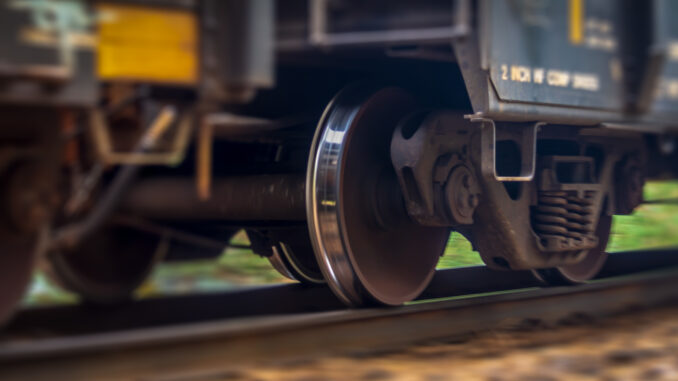
Train wheels are often overlooked as an amazing modern invention. Unlike the wheels on cars and other vehicles, train wheels have to keep the train on the tracks, and they have to go around corners without a steering wheel. Seems impossible but thanks to geometry and physics, it is possible.

To begin with, wheels are attached to an axle (a metal rod). This is called a wheelset. Wheelsets are designed to that both wheels rotate at the same speed. This works great when a train is on a straight track. Unfortunately, trains must go around things, like mountains, and this means the train tracks are not always straight.
Now for the geometry and physics part…
The outside of a curve is slightly longer than the inside of a curve so the wheel on the outside curve must cover more ground as the inside wheel needs to cover less track while the outside wheel catches up – all while turning the same speed.

car and it goes around a corner really fast. To keep the train from going off the tracks, the flange (highlighted in the first image) hits the T-shaped railway track and the wheel is pushed onto the wider part of the wheel. Now that that wheel is on the wider part of the wheel, it is covering more distance as it turns.
This is why the train wheels are coned and not flat. As the train begins to corner, centrifugal force pushes the train towards the outside rail. This is the same force you feel when you are in a
Because the train tracks are always the exact same width, the inside wheel now moves into position where a smaller diameter of wheel is hitting the track and is; therefore, covering less distance as it turns. The wheels are not turning at faster and slower speeds, the shape of the wheel is determining how far the wheel travels. This is happening at the same time that centrifugal force and the wheel’s flange is keeping the train from slipping off the track.
So next time you see a train rounding the corner, say to the person next to you “Wow! That centrifugal force, wheel diameter, and flanges are really doing a good job” and then tell them you have studied physics.
The exact opposite thing happens when the curve of the track goes the other way.

